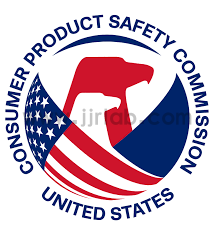
CPSIA Testing Services
What is cpsia testing?
cpsia testing is based on the Consumer Product Safety Improvement Act (cpsia) enacted in the U.S. in 2008. It sets forth a series of stringent requirements for children’s products—consumer goods designed or intended primarily for children 12 years of age or younger. These requirements include limits on lead content, phthalates content, toy safety, durable infant and toddler products, third-party testing and certification, tracking labels, and more.

In general, children’s products must meet the following requirements:
- Comply with relevant product safety standards;
- Be tested for compliance by a CPSC-accREDited laboratory;
- Have a Children’s Product Certificate and supporting compliance documentation;
- Bear tracking labels on the product and its packaging.
Why is CPSIA Testing So Important?
Manufacturers must demonstrate that products sold in the U.S. comply with legal requirements, ensuring they are free from harmfUL substances like lead and phthalates. CPSIA testing is mandatory to access the U.S. market.
Violations can result in fines (up to $100,000 per violation, with a maximum of $15 million), possible asset seizure, and imprisonment of up to 5 years.
Children’s Products and Toys CPSIA Testing Services:
China JJR Laboratory is authorized by the U.S. Consumer Product Safety Commission (CPSC) to conduct testing in accordance with CPSIA requirements.
- Document Review – We can review compliance documentation and provide revision suggestions if needed to ensure regulatory compliance.
- Other Requirements – We also offer comprehensive compliance solutions that incorporate regulations and standards from other countries/regions, as well as U.S. state laws.
Main CPSIA Testing Items for Children’s Products and Toys include:
- Lead in Paint/Coatings Testing
- Lead in Substrate Materials Testing
- Phthalates Content Testing
- Soluble Heavy Metals Testing
- Mechanical and Physical Properties Testing
- Flammability Testing
- Electrical Safety Testing
Email:hello@jjrlab.com
Write your message here and send it to us
 What Are the Testing Items of California Propositi
What Are the Testing Items of California Propositi
 E-Cigarette EU TPD Testing
E-Cigarette EU TPD Testing
 Testing Certification for E-cigarettes Exported to
Testing Certification for E-cigarettes Exported to
 What is Amazon US CPC Certification?
What is Amazon US CPC Certification?
 UK Toy Safety Regulation Standard EN 71-13
UK Toy Safety Regulation Standard EN 71-13
 What is EU UFI Registration?
What is EU UFI Registration?
 EU UFI Registration for E-cigarette E-liquid
EU UFI Registration for E-cigarette E-liquid
 How to get the MSDS Report for Electronic Cigarett
How to get the MSDS Report for Electronic Cigarett
Leave us a message
24-hour online customer service at any time to respond, so that you worry!




